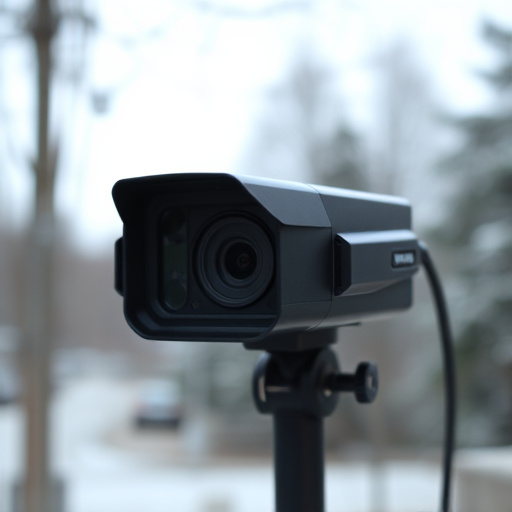Detecting hidden spy cameras with remote viewing capabilities relies on analyzing light reflection and surface interactions. Specialized techniques using specific lighting angles and advanced optical sensors enable professionals to uncover these devices in homes, offices, and public spaces, enhancing security. This method, employing infrared wavelengths and reflected anomaly analysis, is invaluable for preventing unauthorized surveillance in high-risk environments like government facilities and corporate offices. Investing in advanced tools and training enhances individual privacy protection against covert cameras hidden within everyday items.
Uncover the subtle art of detecting hidden spy cameras using light reflection. This cutting-edge technique, aided by remote viewing technology, revolutionizes privacy protection. Learn how understanding light behavior can expose clandestine surveillance devices. From identifying reflections in windows and mirrors to advanced spectral analysis, this article delves into practical applications and innovative strategies for spy camera avoidance. Discover when and where to employ these techniques for a safer digital environment.
- Understanding Light Reflection in Spy Cam Detection
- The Science Behind Remote Viewing Technology
- Practical Applications: When and Where to Use
- Advanced Techniques for Spy Camera Avoidance
Understanding Light Reflection in Spy Cam Detection
Understanding how light reflects and interacts with surfaces is a key principle in detecting hidden spy cameras, especially those equipped with remote viewing capabilities. These devices often employ tiny lenses to capture images or videos, leaving distinct patterns of reflection on surrounding objects. By analyzing these reflections, trained experts can identify unusual activity or potential surveillance equipment.
When a spy camera’s lens reflects light, it creates a unique signature that can be detected through specialized techniques. This is particularly challenging in environments where natural lighting varies or artificial lights are present, as they can interfere with the reflection patterns. However, by utilizing specific angles of illumination and advanced optical sensors, professionals can uncover hidden cameras, ensuring better security measures against such devices, especially in sensitive areas like homes, offices, or public spaces.
The Science Behind Remote Viewing Technology
The Science Behind Remote Viewing Technology involves a fascinating interplay of light, optics, and human perception. This technique leverages the principles of light reflection to detect hidden spy cameras, which is particularly useful in scenarios where visual inspection isn’t feasible or could trigger alarm systems. By using specialized equipment and trained individuals, remote viewing takes advantage of subtle changes in light reflections off surfaces when a hidden camera is present.
The process starts with capturing a baseline image of the area under observation, which serves as a reference point. A specific wavelength of light is then projected onto the scene, often in the infrared spectrum due to its ability to penetrate certain materials and reveal heat signatures. The reflected light is subsequently analyzed for any anomalies or variations from the baseline data. Skilled remote viewers can interpret these reflections, identifying patterns indicative of camera lenses, circuitry, or other components that might be hidden behind walls, ceilings, or other obstacles. This technology has proven effective in various settings, including corporate offices, government facilities, and residential spaces, where preventing unauthorized surveillance is paramount.
Practical Applications: When and Where to Use
The spy camera detection light reflection technique is a practical tool with various real-world applications, especially in scenarios where privacy and security are paramount. It’s an innovative way to identify hidden cameras, such as those equipped with remote viewing capabilities, by utilizing light reflection analysis. This method is invaluable in high-risk environments like government facilities, financial institutions, and sensitive corporate offices where unauthorized surveillance could have severe consequences.
Additionally, it finds utility in everyday situations for individuals seeking to safeguard their personal spaces from covert recording devices. For instance, when setting up a home security system or checking for potential privacy breaches in public places, this technique can be employed effectively. The ability to detect these often-discreet cameras enhances people’s awareness and empowers them to take proactive measures against unauthorized surveillance.
Advanced Techniques for Spy Camera Avoidance
In the ever-evolving landscape of surveillance technology, spy camera detection has become a crucial skill for privacy advocates and security professionals alike. One cutting-edge technique gaining traction is the utilization of light reflection analysis. By employing specialized equipment to detect unusual light patterns and reflections, individuals can now uncover hidden cameras, including those with remote viewing capabilities. This method involves scrutinizing visual cues that might go unnoticed by the naked eye, such as subtle glints or shadows cast by camera lenses.
To stay ahead in this game of cat and mouse, it’s essential to invest in advanced tools designed for spy camera detection. These gadgets often incorporate infrared sensors and high-resolution cameras, enabling users to identify even miniature cameras hidden within everyday objects like clocks, smoke detectors, or light fixtures. Additionally, training in non-invasive imaging techniques allows individuals to navigate their environments with heightened awareness, ensuring that their interactions remain free from covert surveillance by spy cameras with remote viewing capabilities.
The detection of spy cameras using light reflection techniques, combined with remote viewing technology, offers a proactive approach to privacy protection. By understanding how light interacts with various surfaces and employing advanced methods like remote sensing, individuals can now proactively safeguard their spaces from hidden surveillance. This innovative strategy ensures that personal moments remain private, empowering folks to take control of their security in today’s digital age. With practical applications ranging from homes to high-security facilities, this technology is a game-changer for anyone seeking to avoid unwanted voyeurism.
